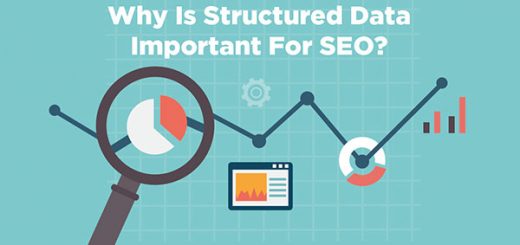Advanced Tips To Improve Conversion Rate for Your E-Commerce Store
Did you know that your e-commerce store is just one in a sea of 820,000 active Shopify stores that are roaming all over the web?
Have you ever faced a situation in which everything seems to be working well, but you’re still not getting enough sales?
One of the factors that set high-converting Shopify stores apart from other average e-commerce stores is the ‘Conversion rate’.
Simply put, a conversion rate is the ratio of your website visitors who actually convert and become customers.
The ability to improve conversion for your store not only increases the odds of getting more sales, but it also upscales the viability of your marketing budget.
Provided that average conversion rates are not more than 2%-3%, you need to stand out if you want your Shopify store to remain in the competition.
There’s no rocket science that turns your e-commerce store profitable overnight. However, there are some advanced strategies, which when implemented correctly, can significantly improve conversion rate for your store.
Here are 12 proven strategies to improve the conversion rate of your store:
- 1. Speed is Critical
- 2. Highlight Product Benefits
- 3. Create a Perfect SEO and CRO Strategy
- 4. Personalization is the Key
- 5. Upselling/Cross-Selling
- 6. Go Responsive
- 7. Simplify the Checkout Process
- 8. Improve Your Copy
- 9. Offer Free Shipping
- 10. Go Visual
- 11. Smooth Navigation & Live Chat
- 12. Show Reviews/Testimonials
1. Speed is Critical

You’re more likely to lose 53% of your customers if your website takes longer than 2-seconds to load.
According to research, even a single second delay can result in a massive 7% reduction in conversions. This means an active Shopify store making $5000 per day could potentially lose roughly $125,000 as an outcome of a one-second delay.
Here are some of the things you can do to ensure you’re not reducing your chances of becoming a high converting Shopify store because of your website’s performance.
Determine Your Website’s Baseline Speed
First things first, you should determine your website’s baseline speed. You can figure this out using software like Google PageSpeed or Pingdom.
Use High-Performing Hosting Version
The next thing you should do is check your hosting plan. Make sure you’re using the best available plan for your e-commerce store as that extra money you’ll put in will be worth it.
Optimize Your Images for Both Web and Mobile
Last but not least, simply optimize your images for both mobile and web. There are many paid and free tools available online that can help you ensure your images aren’t wrecking your Shopify store’s performance.
2. Highlight Product Benefits
No matter how attractive your product range is, all of your efforts will go down the drain if it fails to capture your target audience’s attention.
For instance, you can create customized product descriptions instead of using those run of the mill descriptions provided by the manufacturer. It also gives your e-commerce store an opportunity to integrate keywords and highlight the customized benefits of your products.
Highlighting individual product features and benefits can significantly improve conversion for your store and reduce return or refund requests.
3. Create a Perfect SEO and CRO Strategy
In 2020, keyword optimization offers a lot more than just simple optimization. Today, it acts as one of the most beneficial SEO tools that can turn your shop into a high converting Shopify store.
What SEO does for your e-commerce store is it optimizes content and helps your Shopify store rank better in SERPs.
CRO, on the other hand, optimizes content with the goal of driving your website visitors to complete the CTA.
To improve conversion for your store and to achieve maximum results, you must focus on both these areas.
There are many keyword research tools available, such as SEMrush and Google Keyword Planner, to improve your SEO and get more valuable leads to your website.
After using SEO tools, you need to integrate various CRO tools to ensure that your on-page copy is getting the desired conversion results.
4. Personalization is the Key
Personalization is the key to improving conversion for your store. According to marketers, when a Shopify store offers a personalized customer experience, it can expect a colossal 20% rise in its revenues.
Data science is one of the ways your e-commerce store can leverage the benefits of personalization.
Data science enables an e-commerce store to segment their customers based on different variables, including demographics, buying behavior, purchase history, etc.
It can help a website owner to foresee what customer is more likely to invest in next.
5. Upselling/Cross-Selling
If you’re looking to increase your order value, the upselling and cross-selling techniques can be your safest bids. Here, balance is the key. You may lose a huge chunk of your client base while trying to overdo with complementary products.
Shopify offers various third-party cross-selling apps that you can integrate into your e-commerce store to upsell without much difficulty. Just make sure you choose an app that best fits your business needs.
6. Go Responsive
Responsive design is one of the factors that significantly improve conversion for your store.
The idea is to adapt your Shopify store so that it automatically responds to the device a website visitor is using.
If done correctly, it will improve user experience by minimizing the need to change settings. The load time should be less, and your website users should be able to do whatever they want using their desktop, laptop, tablet or phone.
7. Simplify the Checkout Process
You might lose lots of customers if your checkout system is complicated or less user-friendly.
According to one of the surveys conducted by Baymard Institute, more than 21% of online shoppers would abandon the cart if they find the checkout process long or complicated.
Ideally, your e-commerce store should include a checkout progress bar that displays the complete checkout progress.
Also, you can offer a one-step checkout process. Do not stick to a single payment process. Try to give your buyers multiple payment options at the checkout time as it will help improve conversions for your store.
8. Improve Your Copy
Despite the fact that the internet is a visual place, the significance of a stellar copy is inevitable.
A well-written copy guarantees three things for your Shopify store – it keeps your website visitors informed, foster relationships, and helps improve conversion for your store.
Your copy should be unique and well-formatted. Try to keep pertinent information at the top and use as many headings as possible to improve readability.
Apart from that, create a copy that reflects your brand personality. Avoid jargon and use words that evoke a response from your target audience.
9. Offer Free Shipping

Did you know delivery costs are the biggest reason for cart abandonment? More than 55% of customers change their decision because the shipping costs are too high.
The best way to avoid this problem is by offering free of cost delivery. Don’t forget to highlight this feature contextually as many times as possible that your Shopify store isn’t going to charge an extra penny for shipping.
If free shipping isn’t an option, clearly highlight costs in bold at the top of your page.
10. Go Visual
As mentioned about the internet is a visual space. Yes, it is important to write a compelling copy to improve conversions for your store, but you must not neglect the power of attractive visuals if you want your e-commerce store to convert into a high converting Shopify store.
Add HD product images to your website to provide a better perspective to site visitors. You can also add a video to make an ever-lasting impact on your potential customers.
A short video covering details about your product or services gives your Shopify store a chance to use its voice to attract more visitors.
You want your website visitors to have an uninterrupted user experience in your store. Smooth website navigation ensures your visitors will discover all key areas of your website without much hassle.
Similar to seamless website navigation, the live chat option on your site can also improve conversion for your store. In fact, live chat can lead to a colossal 40% increase in the conversion rate.
12. Show Reviews/Testimonials
People always want to buy from sources that are credible and include plenty of positive reviews. According to research, more than 92% of website visitors go through testimonials before making a purchase.
You can also benefit from these social proofs by listing them on your homepage. The idea is to let potential buyers know that your products are being purchased and admired by other customers.
In all honesty, there are so many things you can do to improve conversion for your store. Make sure you start with a few basic techniques before jumping onto the complicated ones.
 Author Bio: Author Bio:Ricky Hayes is the Co-Founder and Head of Marketing at Debutify – free Shopify theme, helping dropshippers build high-converting stores in minutes. He is a passionate entrepreneur running multiple businesses, marketing agencies and mentoring programs. |








